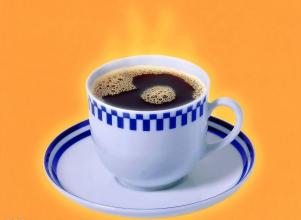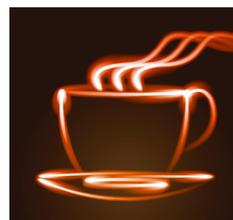The taste of Hawaiian Kona coffee is moist and smooth. Introduction to the characteristics of boutique coffee in the manor area.
Agriculture is the pillar of the local economy, producing sugar cane, pineapple, coffee, bananas and so on, of which pineapple production ranks first in the world. [1] Hawaii is suitable for the growth of sugar cane. Two-thirds of the land in the archipelago grows sugarcane, producing about 1 million tons of crude sugar each year. It is equivalent to 10% of the total sugar consumption in the United States each year, so it is called the sugar island of the United States. [4] Food processing is the main industry, with a few oil refining, chemical industry, cement and so on. Food and major industrial products are dependent on imports. Due to the pleasant climate and beautiful scenery, the tourism industry is well developed, with an average annual tourist volume of more than 7 million. Oahu is an area with a concentrated tourism industry. [1]
According to the Bank of Hawaii, the ripple effect of tourists' spending in Hawaii is 2, that is, for every $1 spent by tourists, it will increase the local total output value by $2. Tourism income accounts for 60% of the local gross domestic product, so that Hawaii's economic growth rate is always higher than the average economic growth level of the United States. [1]
As tourism plays an important role in Hawaii's economy, the Hawaiian state government attaches great importance to protecting the environment, protecting tourism resources, and paying attention to the development of "clean" industries. such as marine science, aquaculture, tropical agriculture, financial services, commercial centers, etc., in order to promote the development of tourism and promote economic development. [1]
Social editor
Population
In 2000, the resident population of the state of Hawaii was 1.212 million and the floating population was 1.334 million (including tourists). Japanese are the largest Asian people in Hawaii, followed by Filipinos, Aborigines, Chinese, Koreans, Vietnamese, Laotians and Thais. The urban population accounts for 86.5%. About 80% of the state's population is concentrated on Oahu. [1]
Education
Hawaii State University
Hawaii State University
The most famous university in Hawaii is the Hawaiian State University (University of Hawaii). Its main school districts are: Hilo, Manao and West Oahu. In addition, famous private universities in Hawaii include Brigham Young University at Hawaii (Brigham Young University-Hawaii Campus), Chamanard University (Chaminade University) and Hawaii Pacific University (Hawaii Pacific University) in Honolulu. And Hawaii Loa College of Hawaii in Oahu, although all Hawaiian islands have coffee trees grown for commercial purposes, the Big Island currently has the largest number of coffee farms, with about 650 farms, but these coffee farms are relatively small, adding up to less than 2000 acres of plantation land, while only 25 coffee farms are operating on the islands of Maui, Molokai, Oahu and Kauai. However, the coffee plantations in these places are much larger than those on the big island, and the total output is more than three times that of the big island coffee garden. Surprisingly, Kauai Island has the largest coffee-growing area of any island, with more than 4000 acres, but all are managed by the same operator, while Molokai Island has only 550 acres of coffee-growing land, with even fewer Maui and Oahu. Most Hawaiian coffee farmers still pick fresh coffee cherries to sell today, but in recent years more and more people are committed to adding value to their coffee bean products, so they mostly go to their own post-processing, drying, grinding and baking their own coffee beans.
Hawaii's most famous coffee bean and coffee producing area is Kona kona, which is located in the southwest of the Big Island, 20 miles long and 2 miles wide, covering the slopes of Hualalai and Mauna Loa. Only coffee beans grown in this area and subject to the most stringent certification standards can be sold under the trademark Kona. Today, about 100 farms have produced coffee beans that meet these standards, and more and more farms are expected to follow suit in the future. The Hawaiian Islands have long been recognized as a paradise on earth, and after nearly two centuries of efforts to grow coffee, the term Kona kona is almost synonymous with quality.
Now other Hawaiian islands are trying to catch up with Kona kona's high quality standards. Now Hawaii is really like Mark to many beach activities and coffee lovers. Twain's image is generally the most enjoyable place on earth.

Important Notice :
前街咖啡 FrontStreet Coffee has moved to new addredd:
FrontStreet Coffee Address: 315,Donghua East Road,GuangZhou
Tel:020 38364473
- Prev

Fruit aroma with persistent flavor of Rwandan boutique coffee beans; introduction to the characteristics of manor producing areas
The tiny Highland beans, which have always been favored, and the 2005 Columbia Q Competition Champion Manor are all run by this private company, and this batch of people printed with SICAF is also run by NKG. Rwanda's coffee grading system is different from other African countries, and the hand constituency needs to be rated by cup test, while Lu's grade is only A, B and C.
- Next

Flavor and taste characteristics of Costa Rican coffee manor producing area introduction of fine coffee beans
One of the most famous is Mountain Costa Rica Coffee, which tastes mellow and neutral. It can be boiled directly or mixed with other kinds of coffee beans to form a mixed coffee. It is also a good choice. Other kinds of Brazilian coffee, such as Rio and Parana, can be produced in large quantities because they do not need too much care. Although they taste rough, they can be regarded as a kind of coffee with good quality and low price.
Related
- Detailed explanation of Jadeite planting Land in Panamanian Jadeite Manor introduction to the grading system of Jadeite competitive bidding, Red bid, Green bid and Rose Summer
- Story of Coffee planting in Brenka region of Costa Rica Stonehenge Manor anaerobic heavy honey treatment of flavor mouth
- What's on the barrel of Blue Mountain Coffee beans?
- Can American coffee also pull flowers? How to use hot American style to pull out a good-looking pattern?
- Can you make a cold extract with coffee beans? What is the right proportion for cold-extracted coffee formula?
- Indonesian PWN Gold Mandrine Coffee Origin Features Flavor How to Chong? Mandolin coffee is American.
- A brief introduction to the flavor characteristics of Brazilian yellow bourbon coffee beans
- What is the effect of different water quality on the flavor of cold-extracted coffee? What kind of water is best for brewing coffee?
- Why do you think of Rose Summer whenever you mention Panamanian coffee?
- Introduction to the characteristics of authentic blue mountain coffee bean producing areas? What is the CIB Coffee Authority in Jamaica?

